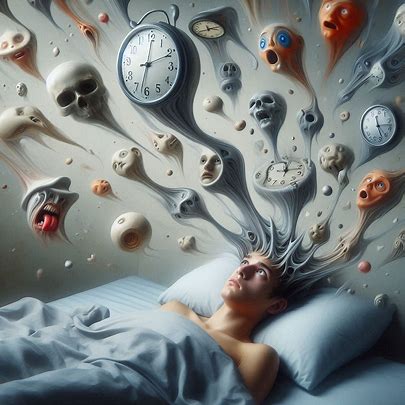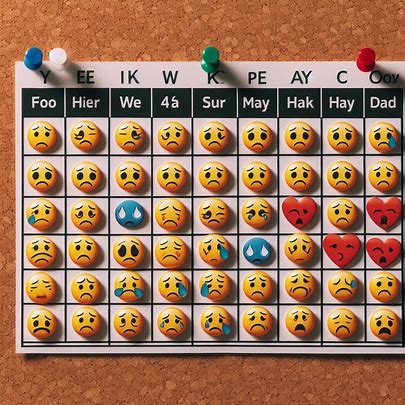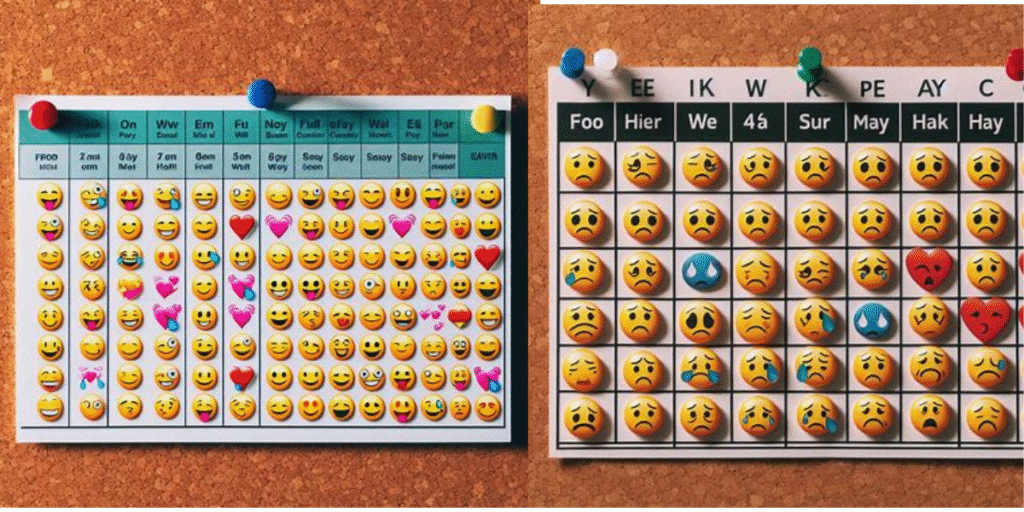Ever feel off but don’t know why? You’re not alone. One moment you’re fine, the next, overwhelmed, and there’s no clear reason. That’s where mood tracking comes in. It’s not just trendy, it’s transformative. And if you’ve been wondering how to start mood tracking for mental health, you’re in the right place.
Let’s talk about a small habit that could change how you understand yourself forever.
What Is Mood Tracking?
Mood tracking is the simple act of regularly noting how you feel. It can be once a day or multiple times. The idea is to track your emotional highs, lows, and everything in between over time.

Why does it matter? Because when you consistently track your mood, you begin to notice what triggers your stress, what lifts your spirits, and what keeps you stuck. It’s like having a mirror for your mind.
Why It’s Trending Now
Mental health conversations are no longer taboo. Gen Z and millennials are leading a self-care revolution, and tech is catching up. There are now hundreds of mental wellness apps, journals, and tools to help you understand what’s going on inside.
But here’s the thing: you don’t need a fancy app to start. Just a genuine desire to understand your emotional patterns. That’s the first step in how to start mood tracking for mental health.
Benefits of Mood Tracking
- Spot patterns: Notice if your mood dips every Sunday evening or spikes after gym sessions.
- Reduce anxiety: Knowing what to expect reduces overwhelm.

- Improve habits: You can finally connect your lifestyle choices with your mental health.
The goal isn’t perfection. It’s awareness. And awareness is power.
How to Start Mood Tracking (No Fancy Tools Needed)
Let’s bust a myth right away: you don’t need a fancy planner, sleek app, or some overly complicated system to start tracking your mood. In fact, the simpler it is, the more likely you are to stick with it.
Here are four easy, low-effort ways to get started today, even if you’ve never tracked a single feeling in your life:
1. Pen & Paper: Old-School, but Golden
Grab a notebook—or even the back of a grocery receipt—and just write:
“Today I felt _____ because _____.”
That’s it. No need for long diary entries. The magic lies in doing it regularly. Over time, you’ll start noticing repeating patterns, like “I always feel low after scrolling social media too much,” or “I’m energized after phone calls with certain friends.”
This method gives you space to reflect without pressure. It’s raw, personal, and totally offline, perfect for anyone who loves the feeling of physically writing down their thoughts.
2. Emoji Log: A 5-Second Mood Diary
If you’re someone who’s always on the go, this is your best friend. Each day, open your phone’s Notes app and drop in a single emoji that reflects your mood.

- 😃 = happy
- 😐 = meh
- 😔 = low
- 😤 = frustrated
- 😍 = in love
- 😩 = overwhelmed
Add a word or two if you feel like it maybe “😔 rough day at work.” Over time, your emoji stream will start showing emotional trends. It’s simple, visual, and easy to stick to, especially if you’re not into writing.
3. Voice Memos: Talk It Out
Sometimes, your thoughts flow better when you speak them out loud. That’s where voice notes come in. Just open your phone’s recorder, take a deep breath, and say:
“Okay, today I felt really drained after that meeting…”

There’s something incredibly therapeutic about hearing your own voice articulate your feelings. And the best part? You can listen back later and literally hear your emotional progress or notice when your tone changes over time.
Perfect for people who think faster than they write.
Remember: the goal is consistency, not complexity.
Don’t overthink it. Just check in with yourself—one emoji, one sentence, one voice memo at a time.
Tips to Stay Consistent

Set a Reminder
Attach mood tracking to an existing habit, like brushing your teeth or making your bed. When it’s part of your routine, you won’t forget. A small nudge at the same time each day builds consistency almost effortlessly.
Use the Same Method Daily
Switching between apps, notebooks, and voice notes can overwhelm you. Pick one method and stick to it. Familiarity keeps things simple and avoids “decision fatigue.”
Be Honest, Not Perfect
This is your safe space. No one’s grading you. If you’re feeling off, say it. Tracking only “good vibes” defeats the purpose. Authenticity brings true insight and healing.
Review Weekly
Spend 5 minutes every week looking back. You’ll start to spot emotional patterns, triggers, and even tiny wins you forgot happened. This reflection makes the habit feel meaningful.
Real-Life Example: 7 Days, Big Realizations
At first, I thought I was just being moody for no real reason. But when I started tracking my emotions daily, even just quick notes, I began to notice patterns I’d never paid attention to.
For example, on the days I skipped breakfast, I consistently felt irritable and scattered by mid-morning. Not a coincidence. And whenever my screen time went beyond a few hours (especially doom-scrolling at night), my anxiety spiked the next day. Seeing this laid out in front of me was a wake-up call.

That’s the quiet magic of mood tracking, it isn’t always about uncovering deep-rooted trauma. Sometimes, it’s the tiny, everyday things that shape our mental health in big ways. And unless you write it down, you just don’t connect the dots.
Once I noticed these patterns, I wanted to take better care of myself, not out of guilt, but out of awareness. And that’s where real change begins.
Mood Tracking Isn’t Just a Trend—It’s a Tool
In a world moving too fast, tracking your emotions slows things down. It gives you space to breathe, notice, and respond instead of react. If you’re looking for a gentle but powerful habit, learning how to start mood tracking for mental health is a beautiful first step. Remember, emotional wellness isn’t a destination, it’s a daily decision.

You don’t need to fix everything. You just need to understand yourself a little better, every single day. Strat mood tracking for mental health, don’t be in a hurry, you don’t get 6 pack abs in a day, or even in a week, so to save yourself from the suffering, start now and be consistent.
Next Read: Dopamine Decor: How to Design Your House For Happiness
Next Read: 7 Money Traps Millenials Fall into and How to Avoid Them.




Pingback: How to Escape the Fleeting Happiness Trap and Find Lasting Joy: 7 solid ways
Pingback: Why Your Brain Loves Overthinking: Stop It 5 Simple Steps
Pingback: This One Financial Habit Separates Wealth Builders from Wage Earners: 6 Steps
Pingback: 4 Ways the Food and Mood Connection Shapes Your Life